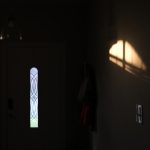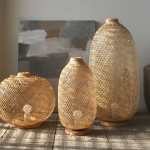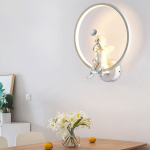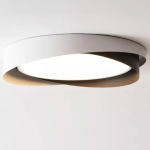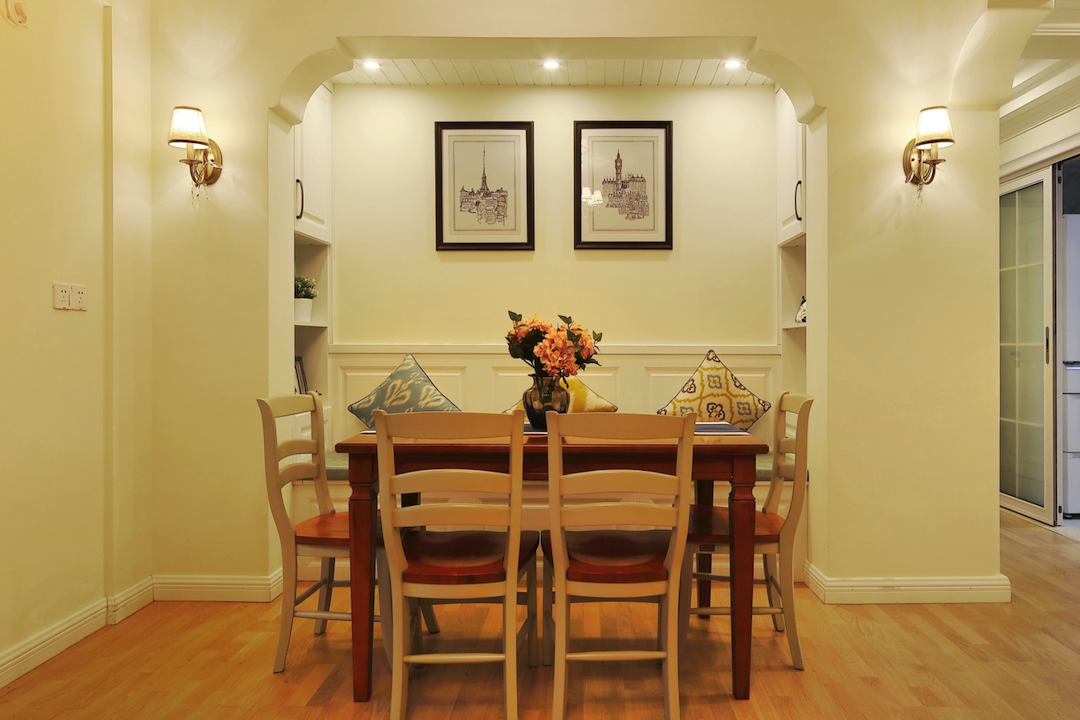
American Classical Downlight represents a harmonious blend of functionality and aesthetic appeal, serving as a quintessential element in both residential and commercial spaces. This lighting fixture is not merely a source of illumination; it embodies a design philosophy that emphasizes elegance, tradition, and craftsmanship. The downlight is characterized by its ability to direct light downward, creating a warm and inviting atmosphere while enhancing the architectural features of a room.
As a staple in American interior design, these fixtures have evolved over time, adapting to contemporary tastes while retaining their classic roots. The allure of American Classical Downlight lies in its versatility. Whether used in grand entryways, cozy living rooms, or sophisticated dining areas, these fixtures can elevate the ambiance of any space.
They are available in various styles, materials, and finishes, allowing homeowners and designers to select options that best suit their vision. The interplay of light and shadow created by these downlights Lovinolive can dramatically alter the perception of space, making them an essential tool for interior decorators aiming to achieve a specific mood or highlight particular features within a room.
History and Origins of American Classical Downlight
The origins of American Classical Downlight can be traced back to the early 19th century when the United States was undergoing significant changes in architecture and design. Influenced by European styles, particularly neoclassicism, American designers began to incorporate elements that emphasized symmetry, proportion, and the use of natural materials. The introduction of gas lighting in the mid-1800s marked a pivotal moment in the evolution of lighting fixtures, allowing for more intricate designs and greater control over illumination.
As electric lighting emerged in the late 19th century, the design of downlights began to evolve further. The transition from gas to electric not only improved safety but also allowed for more innovative designs that could be integrated seamlessly into ceilings and walls. By the early 20th century, American Classical Downlight had established itself as a prominent feature in homes and public buildings alike.
Architects and designers began to experiment with various styles, from ornate chandeliers to simple recessed fixtures, all while maintaining the classical aesthetic that defined this period.
Characteristics and Features of American Classical Downlight
American Classical Downlight is distinguished by several key characteristics that set it apart from other lighting options. One of the most notable features is its ability to provide focused illumination. The design typically includes a reflector or lens that directs light downward, creating a pool of light that can highlight specific areas or objects within a room.
This focused lighting is particularly effective in spaces where task lighting is essential, such as kitchens or reading nooks. Another defining characteristic is the craftsmanship involved in creating these fixtures. Many American Classical Downlights are made from high-quality materials such as brass, bronze, or glass, often featuring intricate detailing that reflects the artistry of the period.
Finishes can range from polished to antiqued, allowing for customization that aligns with the overall decor of a space. Additionally, these fixtures often incorporate decorative elements such as filigree or motifs inspired by nature, further enhancing their visual appeal.
Design and Decor Ideas for American Classical Downlight
Incorporating American Classical Downlight into interior design requires thoughtful consideration of both style and function. One effective approach is to use these fixtures as focal points in a room. For instance, a beautifully designed downlight can serve as an eye-catching centerpiece in a dining area, drawing attention to the table below while providing ample illumination for meals and gatherings.
Pairing these fixtures with complementary decor elements—such as classic wooden furniture or elegant table settings—can create a cohesive look that exudes sophistication. Another design idea involves layering lighting sources to enhance the overall ambiance of a space. American Classical Downlights can be combined with wall sconces or table lamps to create a warm and inviting atmosphere.
For example, in a living room, downlights can be strategically placed to highlight artwork or architectural features while softer lighting from lamps provides a cozy glow for relaxation. This layered approach not only adds depth to the design but also allows for flexibility in adjusting the mood based on different occasions.
Benefits and Advantages of American Classical Downlight
The benefits of American Classical Downlight extend beyond mere aesthetics; they also encompass practical advantages that make them an appealing choice for various settings. One significant advantage is their energy efficiency. Many modern downlights are designed to accommodate LED bulbs, which consume significantly less energy than traditional incandescent bulbs while providing comparable brightness.
This energy efficiency translates into lower utility bills and a reduced environmental footprint. Moreover, American Classical Downlights offer versatility in terms of installation and placement. They can be recessed into ceilings for a sleek look or mounted as pendant fixtures for added visual interest.
This adaptability makes them suitable for diverse architectural styles and room layouts. Additionally, their focused lighting capabilities allow for targeted illumination, making them ideal for highlighting specific areas or features within a space without overwhelming the overall design.
How to Incorporate American Classical Downlight in Modern Interiors
Incorporating American Classical Downlight into modern interiors requires a delicate balance between traditional elegance and contemporary sensibilities. One effective strategy is to select fixtures that feature clean lines and minimalistic designs while still embodying classical elements. For instance, choosing downlights with simple geometric shapes or understated detailing can create a harmonious blend with modern furnishings while paying homage to classical aesthetics.
Another approach is to use these downlights in unexpected ways. For example, installing them in unconventional locations—such as above artwork or along hallways—can create striking visual effects that enhance the overall design narrative of a space. Additionally, combining American Classical Downlights with modern materials like glass or metal can create an intriguing juxtaposition that adds depth and character to the interior.
Maintenance and Care of American Classical Downlight
Maintaining American Classical Downlight is essential to preserving their beauty and functionality over time. Regular cleaning is crucial to prevent dust buildup that can diminish their brightness and overall appearance. For fixtures made from metal or glass, using a soft cloth dampened with mild soap and water is often sufficient.
It’s important to avoid abrasive cleaners that could scratch or damage delicate finishes. In addition to cleaning, periodic inspections are necessary to ensure that all electrical components are functioning correctly. Checking for loose connections or signs of wear can help prevent potential issues before they arise.
If any bulbs need replacement, opting for high-quality LED options can enhance energy efficiency while maintaining the desired level of illumination.
The Timeless Elegance of American Classical Downlight
American Classical Downlight stands as a testament to the enduring appeal of classic design principles within modern interiors. Their ability to blend functionality with aesthetic charm makes them an invaluable addition to any space, whether traditional or contemporary. As trends continue to evolve, these fixtures remain relevant by adapting to new technologies while retaining their classic roots.
The timeless elegance of American Classical Downlight lies not only in their design but also in their capacity to transform spaces through light. By thoughtfully incorporating these fixtures into various settings, homeowners and designers can create environments that are both inviting and sophisticated, celebrating the rich history and artistry behind this iconic lighting choice.

